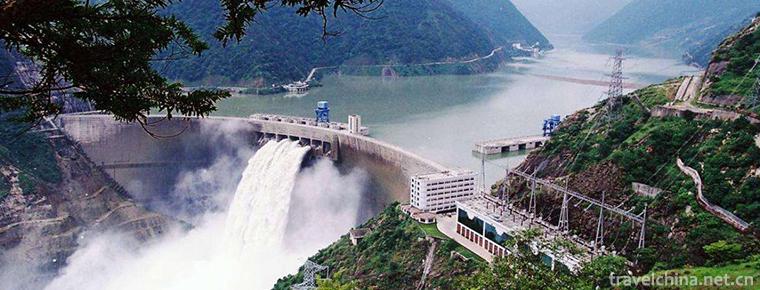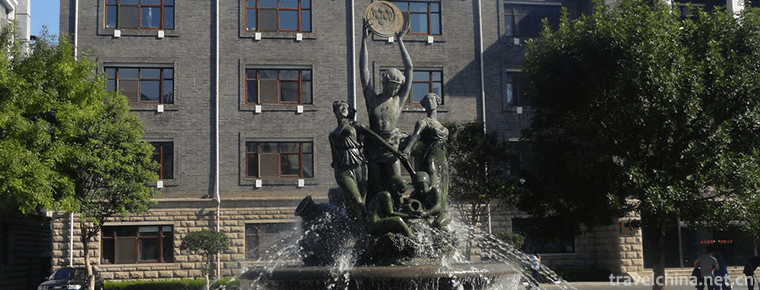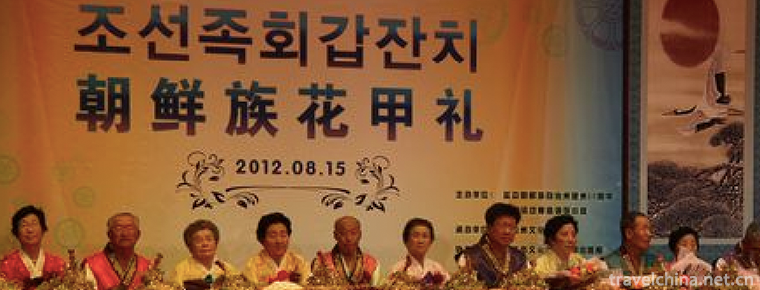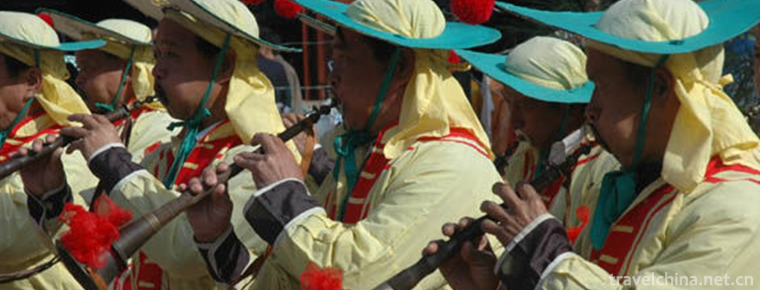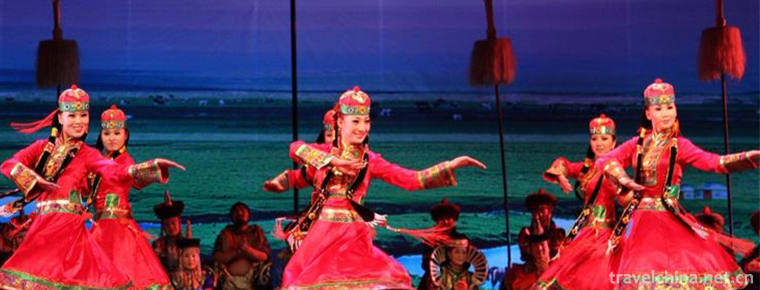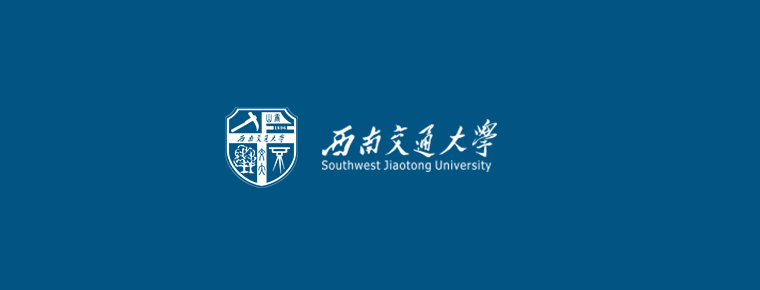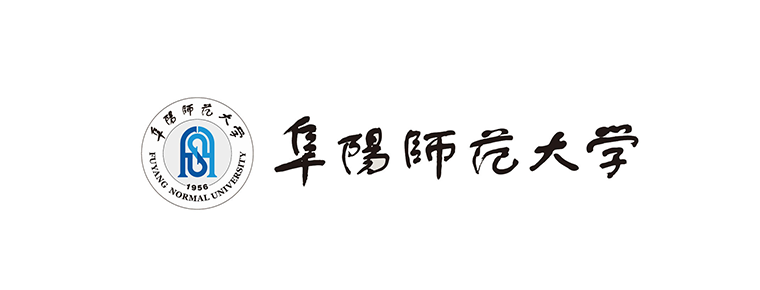University of Chinese Academy of Sciences
University of Chinese Academy
of Sciences ( University of Chinese Academy of Sciences Referred
to as "National Science and Technology University", was approved by
the Ministry of education. Postgraduate Education Mainly, Integration
of science and education Characterized by innovative institutions of
higher learning. Selected countries " "Double
First-Class" initiative "World class discipline
construction," Top student training program for basic subjects "Yes. University
of the Pacific Alliance , Beijing University Alliance The
alliance of University of science and technology, China University
Planetary Science Alliance Members, the first batch Degree authorized
independent audit unit One of.
The predecessor of the National University of science and technology is Graduate University of Chinese Academy of Sciences Founded in 1978, it is the first new China founded by the CPC Central Committee and the State Council. Graduate School He trained the first doctor of Science in China, the first doctor of engineering, the first female doctor and the first two degree doctor. In June 2012, it was renamed the University of Chinese Academy of Sciences. In 2014, the National University of science and technology began to recruit undergraduates, forming a higher education system covering three levels: Ben, Shu and Bo.
By the end of 2018, the school was composed of four campuses in Beijing (Yuquanlu Road, Zhongguancun, Olympic Village, Yan Qi Lake), five educational bases outside Beijing (Shanghai, Wuhan, Guangzhou, Chengdu, Lanzhou) and 116 training units distributed throughout the country. There were 55 teaching and scientific research sites in the country, including 40 in Beijing, 15 outside Beijing, 7 affiliated hospitals, 13 undergraduate majors, and 10 subjects in science, engineering, medicine, etc. Academicians There are 240 students, 6600 doctoral tutors, 1541 students in the undergraduate course, 49 thousand in the graduate school, the first in the number of doctoral students in the country, 1/3 in science, 1/3 in foreign countries, 1050 in foreign Ph.D., and the first in foreign universities.
National History
Lay a foundation and start an undertaking
· The formal enrollment of graduate students began in 1951.
On November 1950 19-20, the Chinese Academy of Sciences conducted the first intern recruitment examination in Beijing, Nanjing and Shanghai at the same time, and explored the experience of postgraduate enrollment and training.
In June 11, 1951, Chinese Academy of Sciences The Ministry of Education jointly issued the "1951 summer recruitment research internship and postgraduate approach", and officially began to recruit graduate students in a unified way, marking the beginning of China's postgraduate education system. The document stipulates that the Chinese Academy of Sciences recruits research trainees to train scientific research talents, and the Ministry of education recruits graduate students for the training of teachers of higher education institutions.
In June 7, 1951, the Ministry of education and the Chinese Academy of Sciences and the Ministry of personnel established the postgraduate Committee, which was then Vice Minister of education. Zhao Long Acting chairman, vice president of Chinese Academy of Sciences Wu You Xun And Ding Hua, deputy director of the Ministry of personnel and 13 of the university representatives. The recruitment committee consists of 53 famous scientists and professors from the Chinese Academy of Sciences and the Ministry of education, 15 of them (Mathematics, physics, chemistry, biology, geology, geography, surveying machinery, aviation, electrical engineering, civil engineering, chemical engineering, mining, metallurgy, agriculture, culture, history, psychology, politics, law, Finance).
In 1951, 500 graduate students were enrolled and 276 actually enrolled, including 95 from the Chinese Academy of Sciences. Renmin University of China 101, 80 in other schools.
· Promulgate the Provisional Regulations of the Chinese Academy of Sciences for postgraduate students
In June 12, 1954, the Standing Committee of the Chinese Academy of Sciences decided to organize the study.
The Drafting Committee of the Health Ordinance is headed by the vice president. Zhu Kezhen Chairman. In July 29th, the Executive Council of the Academy adopted the Provisional Regulations of the Chinese Academy of Sciences for postgraduate students. On August 5, 1955, the seventeenth session of the plenary session of the State Council examined and approved the Provisional Regulations of the Chinese Academy of Sciences for postgraduate students. This is the first time in New China that regulations concerning the cultivation of advanced scientific talents are available.
In September 6, 1955, the people's Daily published editorials, "the new force in actively cultivating scientific research", and pointed out: "the establishment of a formal postgraduate system is first started by the Chinese Academy of Sciences. After that, colleges and universities with conditional conditions should also establish a formal postgraduate system."
In May 12, 1955, Wu You Xun The graduate student admissions committee of the Chinese Academy of Sciences, as the director, began enrollment in September 15th. According to the needs of national construction and scientific development and the conditions of the hospitals, the first batch of graduate students were recruited into 45 specialties and 50. The training objectives are: "a certain level of Marxism Leninism, a solid foundation for this discipline, practical knowledge of national construction, and independent and professional creative scientific research".
October 22, 1962, director of the Institute of Geophysics, Chinese Academy of Sciences Zhao nine Zhang I sent a letter to the Chinese Academy of Sciences and suggested that the Chinese Academy of Sciences set up a graduate school.
In September 1964, the Chinese Academy of Sciences set up a graduate school in Zhongguancun, Beijing, and listed the "Graduate University of Chinese Academy of Sciences".
In the 1955-1965 year, the Chinese Academy of Sciences enrolled 1518 graduate students, accounting for 11.2% of the total number of Postgraduate Admissions, of which 24.7% of the total enrollment in 1963 was up to the national level. In 1965, the Chinese Academy of Sciences had 81 enrolment units, accounting for 34.6% of the total number of enrolment units in the country. The number of graduate students in the Chinese Academy of Sciences has reached nearly 1000 (943), accounting for 20.7% of the total number of graduate students in the country.
After the "Cultural Revolution" began in 1966, the Graduate University of Chinese Academy of Sciences closed.
Reform and development
· Postgraduate education recovery and development period
In September 5 and 10, 1977, the Chinese Academy of Sciences submitted to the State Council the report on several issues of University of Science & Technology China and the report on the recruitment of graduate students. In November 3rd, with the approval of the State Council, the Chinese Academy of Sciences and the Ministry of Education jointly issued the notice on the specific ways to recruit graduate students in 1977, marking the 12 years after the suspension of the postgraduate education system in China.
In September 10, 1977, with the approval of the State Council, the Chinese Academy of Sciences set up the first graduate school in Beijing. Graduate School of University of Science & Technology China It has majors in mathematics, physics, chemistry, astronomy, geography, biology and radio technology, computer engineering, space technology, environmental science, and scientific organization and management. In 1978, the 73 Institutes of the Chinese Academy of Sciences and 89 units of 208 colleges and universities, the Chinese Academy of Social Sciences and the ministries and commissions recruited the first batch of postgraduate students after the restoration of postgraduate education. The Chinese Academy of Sciences recruited 1529, accounting for 14.3% of the total enrollment, accounting for 22.8% of the total number of science and Engineering in the country.
In March 1, 1978, the Graduate School of University of Science & Technology China was formally established in Beijing. It is the first graduate school founded by the CPC Central Committee and the State Council. In March 31st, the State Council issued the "reply to Yan Ji" and other appointments. Yan Ji Si Dean of graduate schools Marsling Vice president. The graduate school held its opening ceremony in October 14, 1978.
In 1980, the thirteenth session of the Standing Committee of the Fifth National People's Congress adopted the "Regulations on the study of the people's Republic of China". The academic degrees Ordinance stipulates that "master's degree and doctorate degree shall be conferred by the institutions of higher learning and scientific research institutes authorized by the State Council", and that in the form of legislation, the postgraduate education in China is jointly carried out by universities and scientific research institutions. The first director of the Academic Degrees Committee of the State Council was appointed by the then president of the Chinese Academy of Sciences. Fang Yi Take office.
In May 20, 1981, the State Council approved the Interim Measures for the implementation of the regulations on the academic status of the people's Republic of China. In September 25th, according to the summary of the third meeting of the Academic Degrees Committee of the Chinese Academy of Sciences, doctoral degrees and master's degrees were awarded to each department temporarily. In November, the graduate school held its first postgraduate ceremony in Beijing.
In May 1982, the Chinese Academy of Sciences approved the use of the Party group at the same time. Graduate University of Chinese Academy of Sciences And University of Science & Technology China graduate school two names. In mid June, with the approval of the Academic Degrees Committee of the State Council, the Chinese Academy of Sciences first conducted a pilot study and conducted the first doctoral dissertation defense in China. Ma Zhong Qi (Institute of high energy physics, Chinese Academy of Sciences), Xie min (Institute of systems engineering, Chinese Academy of Sciences), Li Shang Zhi Zhao Lincheng, Bai Zhi Dong , Feng Yulin (University of Science and Technology of China) and other 6 graduate students received their doctorate degree in science and engineering respectively. They became the first batch of doctors who were trained in Chinese history.
In 1982, China's first batch of 12 graduate students received doctoral degrees, of which 7 were the Chinese Academy of Sciences, accounting for 58% of the total number.
In May 7, 1985, the Chinese Academy of Sciences issued the notice on the decentralization of academic degrees and the Interim Rules for the granting of doctoral degrees of the Chinese Academy of Sciences.
· Graduate University of Chinese Academy of Sciences changed its name
The CPC group of the Chinese Academy of Sciences held a conference on educational work of the Chinese Academy of Sciences in Shanghai in June 2000, and put forward the idea of reforming the postgraduate education system of the Chinese Academy of Sciences.
In July 2000, the Chinese Academy of Sciences set up the "preparatory work group for Graduate University of Chinese Academy of Sciences" to start the work of preparing the new graduate school.
In September 20, 2000, the Chinese Academy of Sciences submitted to the State Council the report on renaming the Graduate School of University of Science and Technology of China (Beijing) to Graduate University of Chinese Academy of Sciences. The system reform and resource integration of graduate education in the 109 institutes at that time were carried out, and on the basis of University of Science & Technology China Graduate School (Beijing), the Chinese Academy of Sciences changed its name to the establishment of Graduate University of Chinese Academy of Sciences.
In December 29, 2000, the Academic Degrees Committee of the State Council and the Ministry of Education issued the reply on "agreeing to adjust the management system and renaming of postgraduate training and degree authorization of the Chinese Academy of Sciences". Graduate University of Chinese Academy of Sciences formally renamed it, and placed the 5 academic departments of the Chinese Academy of Sciences and the Ph. D. degree authorization points of the first level disciplines, the two level of doctoral degree authorization points, and the two degree master degree authorization points of the institutes as the academic conferment units.
In February 2001, the Chinese Academy of Sciences issued a document to clarify the principle of "three unification and four combinations" for graduate schools, namely, the functions of "unified enrollment, unified education and management, unified degree awarding", and the leadership system of "combination of hospitals, the teaching staff combined with hospitals, the management system combined with hospitals, and the training system of hospitals". In May 22nd of the same year, the new graduate school's renamed ceremony was held in Yuquanlu Road Park, Beijing.
In March 4, 2005, according to the notice of the Academy of management cadres of the Chinese Academy of Sciences incorporated into Graduate University of Chinese Academy of Sciences, Academy of management cadre of Chinese Academy of Sciences Incorporated into Graduate University of Chinese Academy of Sciences.
· The Chinese Academy of Sciences changed its name and established undergraduate students.
In June 2012, approved by the Ministry of education and the editor in chief, Graduate University of Chinese Academy of Sciences
Officially renamed the University of Chinese Academy of Sciences (hereinafter referred to as the National University of science and Technology), and established a "science and education integration, education oriented, collaborative innovation, serving the country" school running policy.
In June 2013, the Shenzhen advanced technology college of the Chinese Academy of Sciences was established in Shenzhen. The college is the first professional college in the National University of science and technology.
In 2014, the Ministry of education and the Ministry of science and technology approved the enrolling of undergraduate students to actively explore innovative talents. In those days, the National University of science and technology enrolled 332 first undergraduate students, distributed in mathematics, physics, chemistry, life sciences, materials science and engineering, computer science and technology 6 specialties.
The admission of undergraduates marks the formation of a complete higher education system dominated by postgraduate education, which is a milestone in the development of the National University. The Yan Qi Lake Campus of the national science and Technology University started construction in 2009. The western district was opened in September 2013, and the eastern district was opened in September 2015.
In July 2015, School of economics and surgery, University of Chinese Academy of Sciences Established.
In January 2016, the University of Chinese Academy of sciences joined the state. Top student training program for basic subjects " In May, the University Arts Center of the Chinese Academy of Sciences was established and donated two hundred million yuan. In November, the Chinese Academy of Sciences and the Shenzhen Municipal People's government signed a memorandum of understanding on deep cooperation in running schools. The two sides will rely on the cooperation of the Shenzhen advanced technology research institute of the Chinese Academy of Sciences. Shenzhen campus of the Chinese Academy of Sciences 。
In 2017, the Chinese Academy of Sciences and the Beijing Municipal People's government signed the agreement on CO constructing the University of Chinese Academy of Sciences.
In July 2017, the Chinese Academy of Sciences signed a framework agreement with the North China Petroleum General Hospital. In August, the opening ceremony of the North China Hospital of the Chinese Academy of Sciences and the cooperative promotion meeting were held at North China Petroleum General Hospital, marking the formal establishment of the First Affiliated Hospital of national science and Technology University. In December, the Chinese Academy of Sciences and the Fujian provincial government and the Fuzhou municipal government signed a joint venture in Fuzhou. Fujian College of Chinese Academy of Sciences Agreement.
In the fourth round of the national evaluation results published in December 2017, the 18 subjects in the National University of science and technology reached the fourth round of A+ assessment in the whole country, and 30 first-class disciplines reached class a. By the end of 2017, 31 universities of science and education and 7 departments of the Ministry of science and technology had been established.
In February 2018, the University of Chinese Academy of Sciences and the Nanjing Municipal People's government held the signing ceremony of the cooperation agreement. Nanjing College of Chinese Academy of Sciences 。 In April 27th, with the approval of the Academic Degrees Committee of the State Council, the school became the first self assessment unit authorized by degree. In October 14th, the commemorative meeting of the 40th anniversary anniversary of the founding of the Chinese Academy of Sciences was held in the Yan Qi Hu campus. At the commemoration conference, the National Science University harvested a birthday gift from the stars - an asteroid was officially named " National Science star " In November, the Chinese Academy of Sciences and Beijing Huairou Science City The management committee and the people's Government of Huairou District of Beijing signed a strategic cooperation agreement to jointly promote the construction of Beijing science and technology innovation center; the Chinese Academy of Sciences and the Chongqing Municipal People's Government jointly built the project. Chongqing College of Chinese Academy of Sciences The first clinical medical college of the Chinese Academy of Sciences was set up in Chongqing. By the end of 2018, there were 55 teaching and research units directly under the national science and Technology University, including 40 in Beijing and 15 outside Beijing, and 7 affiliated hospitals.
In January 2019, National professional and technical personnel continuing education base The Institute of continuing education of the Chinese Academy of Sciences was established. In July, it became a founding member of China University Planetary Science Alliance. In July, Beijing Hospital The Beijing Academy of clinical sciences, a Chinese Academy of Sciences jointly established by the University of Chinese Academy of Sciences, was formally established. In September, it became the


founding member and executive director unit of China's Federation of artificial intelligence education.
In November 15, 2019, the University of Chinese Academy of Sciences and University of Chinese Academy of Social Sciences A strategic cooperation framework agreement was formally signed in Beijing.
https://www.ucas.ac.cn/



-
Baishishan Scenic Area Baoding City Hebei Province
Baishishan Scenic Area, also known as Baishishan National Geological Park, is called "Xiaohuangshan" because its scenery resembles the Huangshan Mountain in Anhui Province..
Views: 252 Time 2018-11-24 -
Harbin Sun Island Scenic Area
Sun Island Scenic Area is located on the North Bank of Songhua River in Harbin City, Heilongjiang Province, with a total area of 88 square kilometers, of which the planned area is 38 square kilometers.
Views: 120 Time 2018-12-05 -
Ertan National Forest Park
Ertan National Forest Park is located in Yanbian County and Miyi County, the northern suburb of Panzhihua City, Sichuan Province, with a total area of 732.4 square kilometers .
Views: 137 Time 2018-12-22 -
Jiuizi Scenic Spot
Yuuzi Square is located in the Central District of Wuhu City. The square covers a total area of 678,800 square meters and its spatial structure is changeable. Priority is distinct and rhythmic.
Views: 106 Time 2019-01-29 -
Zhangyu Wine Culture Museum
Zhangyu Liquor Culture Museum is one of the few professional museums in the world wine industry. It is located at the original site of Zhangyu Company, Da Ma Lu, Zhifu District, Yantai City, Shandong .
Views: 169 Time 2019-03-17 -
Korean Huajiali
The flower armor ceremony of the Korean nationality is one of the important rituals of the Korean nationality's birthday ceremony. Since ancient times, the Korean people have regarded respecting the e.
Views: 275 Time 2019-04-16 -
Hebei Drum Music
Hebei drum and percussion music is a local traditional music mainly composed of percussion instruments and percussion instruments. It has been an important type of music.
Views: 119 Time 2019-05-02 -
Mongolian Sawurden
Mongolian Sawurden, Xinjiang Uygur Autonomous Region and Jingxian traditional dance, one of the national intangible cultural heritage..
Views: 199 Time 2019-06-04 -
Southwest Jiaotong University
Southwest Jiaotong University is a national key university directly under the Ministry of Education. The first batch of national "double first-class", "211 project", "characte.
Views: 160 Time 2019-08-31 -
Anhui University Of Technology
Anhui University of Technology is located in Anhui province. Ma'anshan The city is a multi-disciplinary university characterized by industry and industry. Ministry of science and technology With the s.
Views: 288 Time 2019-10-10 -
Fuyang Normal University
Fuyang Normal University is a regular college in Anhui province. Excellent agricultural and forestry talents education and training plan Reform pilot projects, the first batch of pilot units for compr.
Views: 168 Time 2019-11-09



